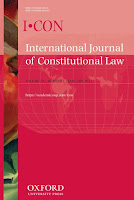Po Jen Yap & Rehan Abeyratne
International Journal of Constitutional Law, Volume 19, Issue 1, pp. 127–148
International Journal of Constitutional Law, Volume 19, Issue 1, pp. 127–148
Published in January 2021
Abstract: Courts around the world today are empowered to strike down unconstitutional constitutional amendments. But can a court strike down amendments that restore parts of the original constitution? The Appellate Division of the Bangladesh Supreme Court did precisely this in Bangladesh v. Asaduzzaman Siddiqui (2017), holding unconstitutional an amendment that restored the judicial removal provision that existed in the original 1972 Constitution. This article analyzes Siddiqui within the comparative constitutional amendment literature and the broader South Asian context. Despite the apparent incongruity of applying the basic structure doctrine to an original constitutional provision, we argue that Siddiqui is defensible on both theoretical and pragmatic grounds. The amendment that was invalidated in this case represented an unconstitutional departure from the judicial removal practice that had existed for several decades and was entrenched by a previous amendment, which “dismembered” the original constitution and safeguarded constitutional democracy in Bangladesh. At a regional level, Siddiqui is similar to recent judgments in India and Pakistan in which apex courts assert their control and limit political influence in judicial appointment and removal proceedings. Such judicial self-dealing, we argue, is more justified in Bangladesh and Pakistan than in India due to their checkered histories with democracy and political interference with judicial functions.

No comments:
Post a Comment